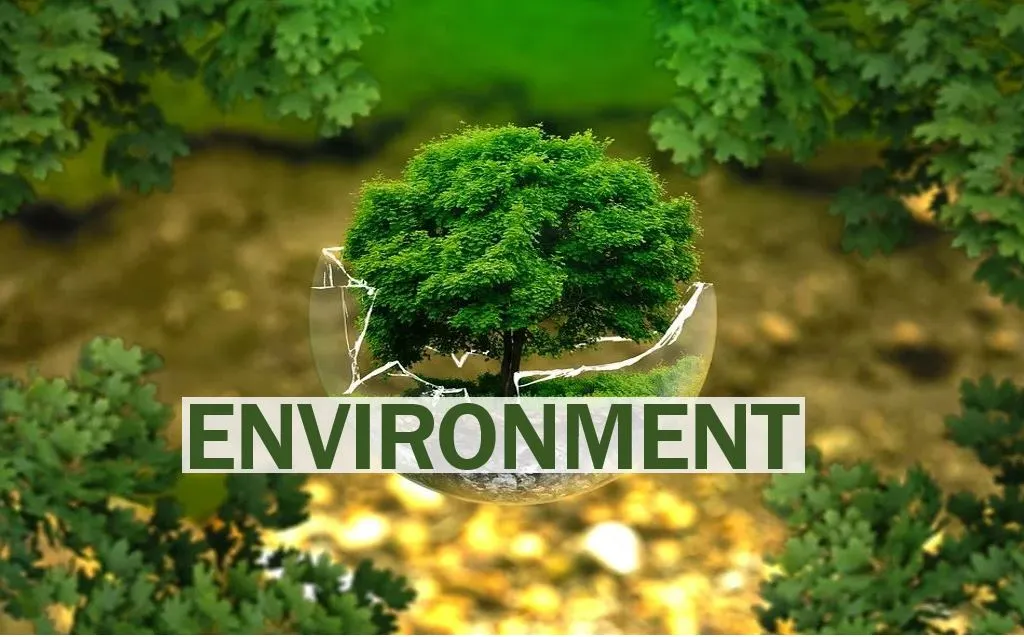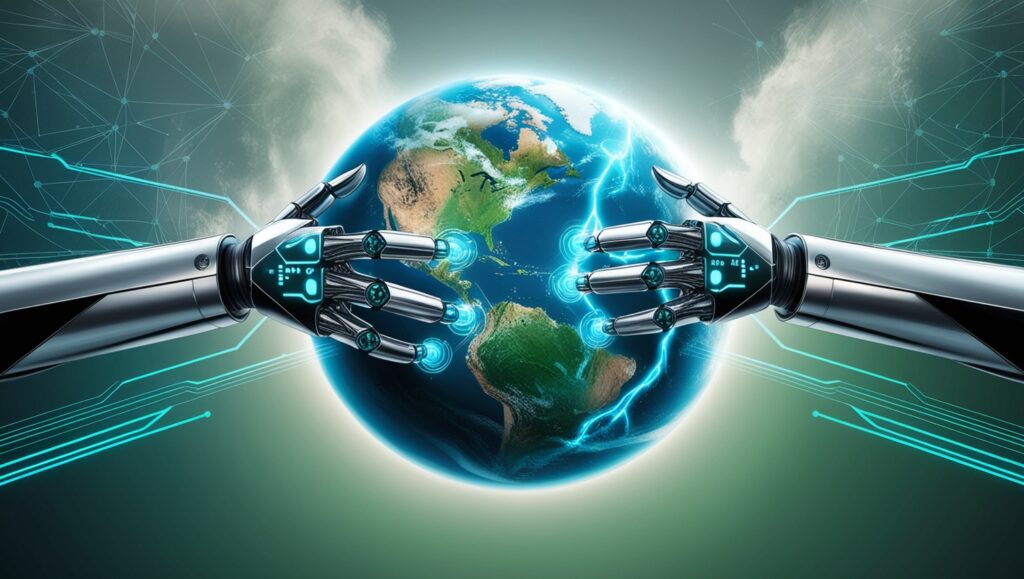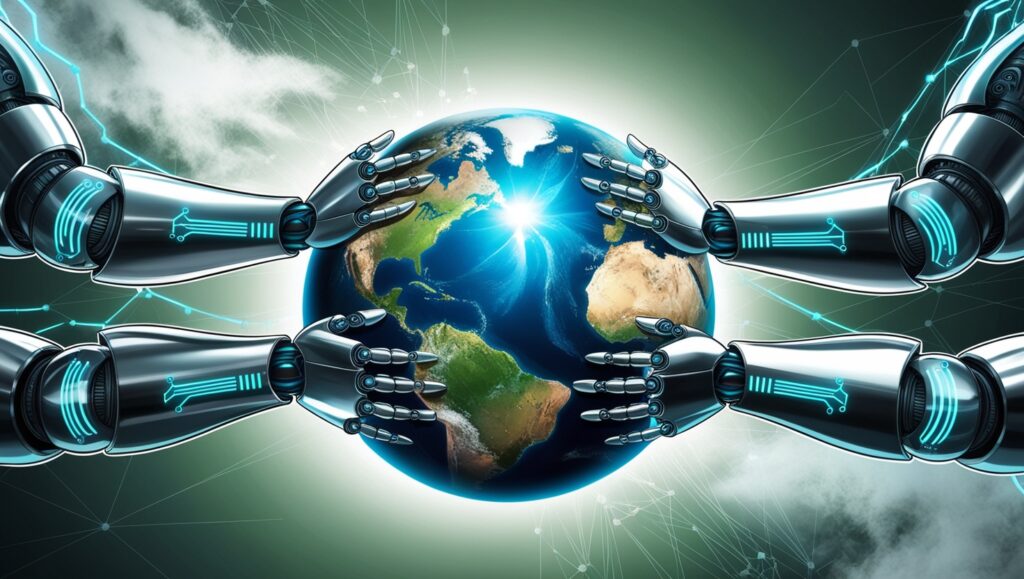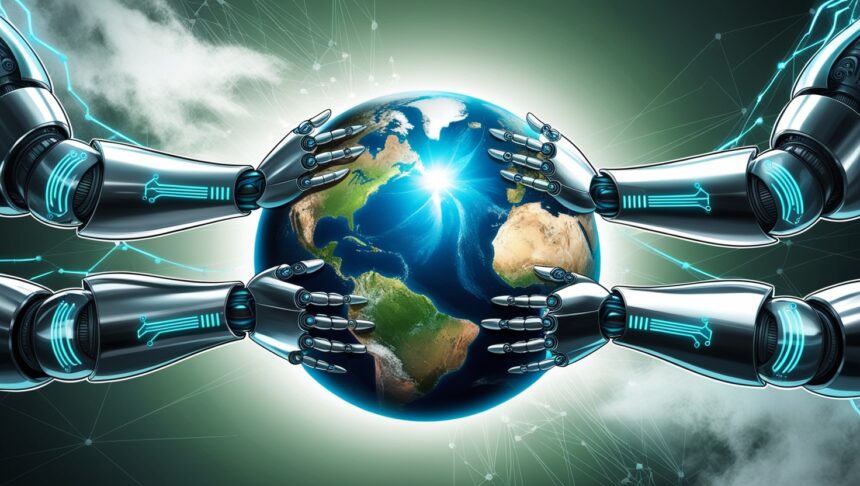In this article, I will discuss the How Does AI Affect the Environment. Smart machines draw huge amounts of energy, causing extra carbon, yet they also help us monitor forests and save power in grids.
Knowing both sides is key to building greener tech that protects nature and serves people.
What is Environment?
The environment is simply the world around us-air, water, soil, plants, animals, and all the little ecosystems that tie them together.

It gives us everything we need to stay alive and helps keep Earth balanced, much like a giant safety net. By housing countless species, controlling the climate, and giving each creature a place to thrive, the environment acts as Mother Natures own bodyguard.
However, factory smoke, tech waste, and other human footprints can tear at that net and harm the very systems we depend on. For our health, our future, and the natural treasures yet to be discovered, learning about, and caring for, our surroundings isnt just nice; its necessary.
How Does AI Affect the Environment

High Energy Use
Training big AI models needs lots of electricity, pushing power grids to their limits.
Carbon Footprint
Most data centers still run on fossil fuels, so the clouds AI lives in pump out extra carbon.
E-Waste Problem
Researchers upgrade GPUs and chips all the time, and the discarded gear ends up poisoning soils and water.
Thirsty Servers
Keeping racks cool takes tons of water, draining local wells and rivers when communities need every drop.
Mining Costs
Digging up rare minerals for chips scars forests and harms wildlife, often in places with weak protections.
Land and Power
Building giant centers demands cleared land and steady energy, smashing habitats before projects ever boot up.
Green Eyes
On the plus side, AI spots smoke, tracks endangered species, and logs tree loss long before humans notice.
Smarter Grids
AI also tunes factories and power lines so they waste less energy, cutting back the damage done upstream.
Positive Environmental Applications of AI
Wildlife and Ecosystem Monitoring: Smart drones, cameras, and sensors powered by AI follow rare animals, watch over fragile habitats, and spot poachers in real time.
Climate Change Prediction: Machine learning sifts through huge climate records, sharpening forecasts so researchers can warn communities about storms and study long-term shifts.
Energy Efficiency: AI adjusts lights, heaters, and grid flow on the fly, cutting waste and giving solar and wind power room to shine.
Sustainable AI Practices
Energy-Efficient Model Design
Engineers write leaner code and shrink models through pruning, quantization, and distillation so the system does less work and spends less power.
Use of Renewable Energy
Leading data centers now plug into solar, wind, and other green grids to cut the carbon costs of training huge AI workloads.
Edge Computing
Running smart tasks right on phones or sensors skips the long trip to distant servers, saving energy and speeding up the user experience.
Challenges and Ethical Considerations

Balancing Innovation and Sustainability
Building powerful AI models eats up a lot of electricity and raw materials, placing progress and planet in uneasy competition.
Transparency in Energy Use
Too many firms keep quiet about how much power their training jobs really pull, so outsiders struggle to spot and fix the biggest leaks.
Equitable Access and Impact
The waste heat and pollution tied to cloud computing often lands in neighborhoods already carrying heavy burdens, sparking fresh worries about fairness.
Long-Term Ecological Risks
Because AI is still growing so fast, its full ripple effect on air, water, and land is unknown; regulators and researchers must catch up.
Accountability for AI Emissions
Its hard to say who should pay for the greenhouse gases-a creator, a customer, or the giant data-center landlord-so blame tends to float.
Pros & Cons
| Pros | Cons |
|---|---|
| Helps monitor wildlife and ecosystems | High energy consumption during model training |
| Improves climate change prediction | Significant carbon emissions from data centers |
| Optimizes energy use in industries and homes | Generates electronic waste from hardware upgrades |
| Supports renewable energy integration | Large water usage for cooling data centers |
| Enables efficient resource management | Resource extraction harms ecosystems |
| Facilitates smarter agriculture | Expands infrastructure leading to habitat loss |
| Reduces waste through AI-driven optimization | Lack of transparency in AI energy use |
| Promotes sustainable urban planning | Ethical concerns over environmental justice |
Conclusion
In short, artificial intelligence affects our planet in mixed ways; it carries serious problems but also bright chances. Building and running AI systems uses a lot of power and raw materials, adding heat and e-waste, yet smart code helps monitor forests, cut waste, and even guide clean energy grids.
If the tech field chooses greener chips, cools data centers wisely, and opens its books, it can shrink that footprint and join the worldwide effort to protect the Earth. Now is the time for responsible AI to become the backbone of a truly sustainable future.









